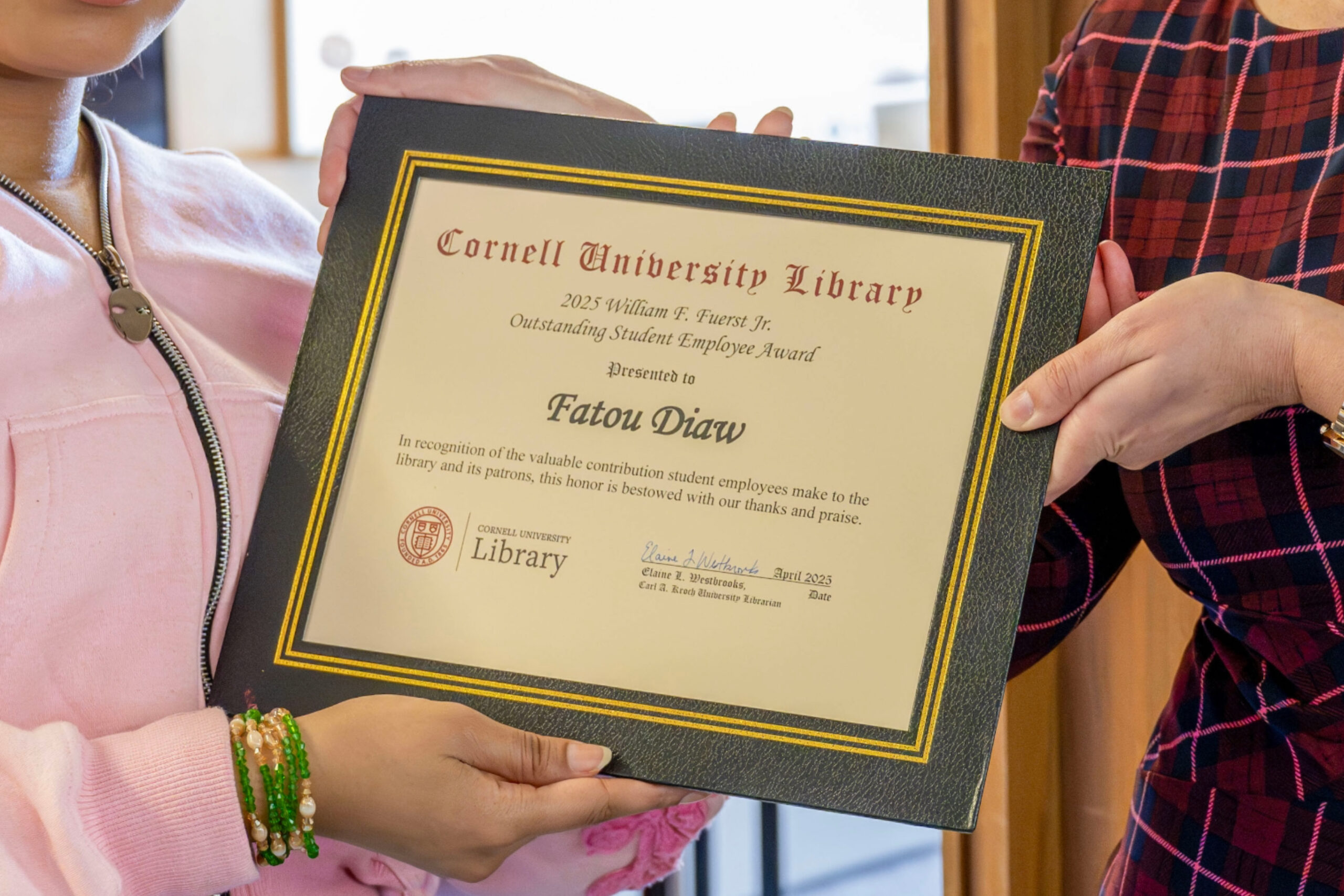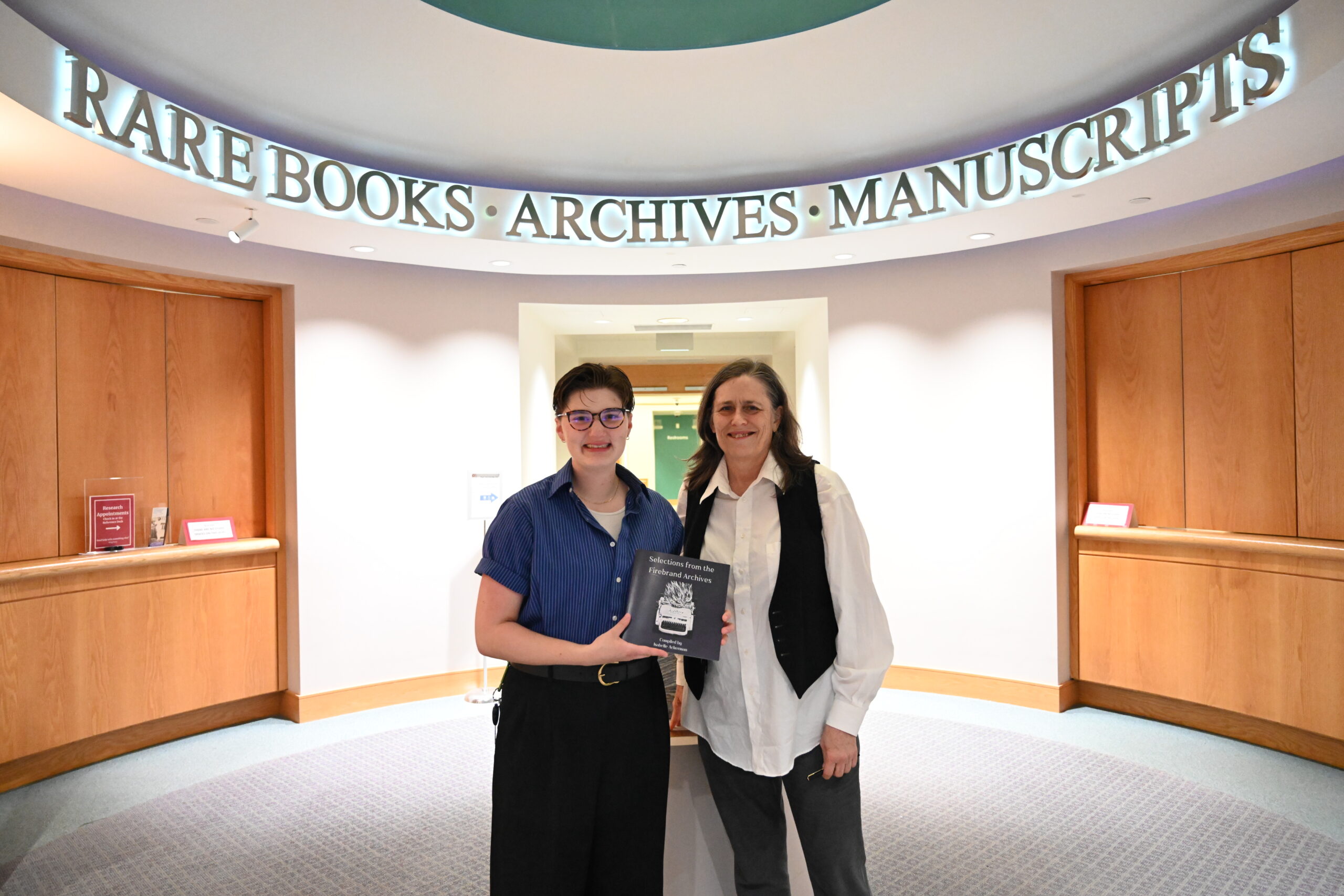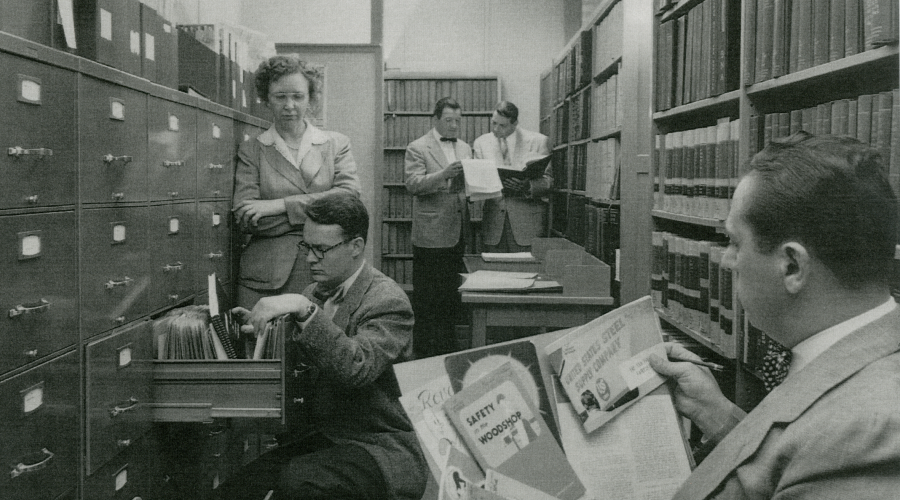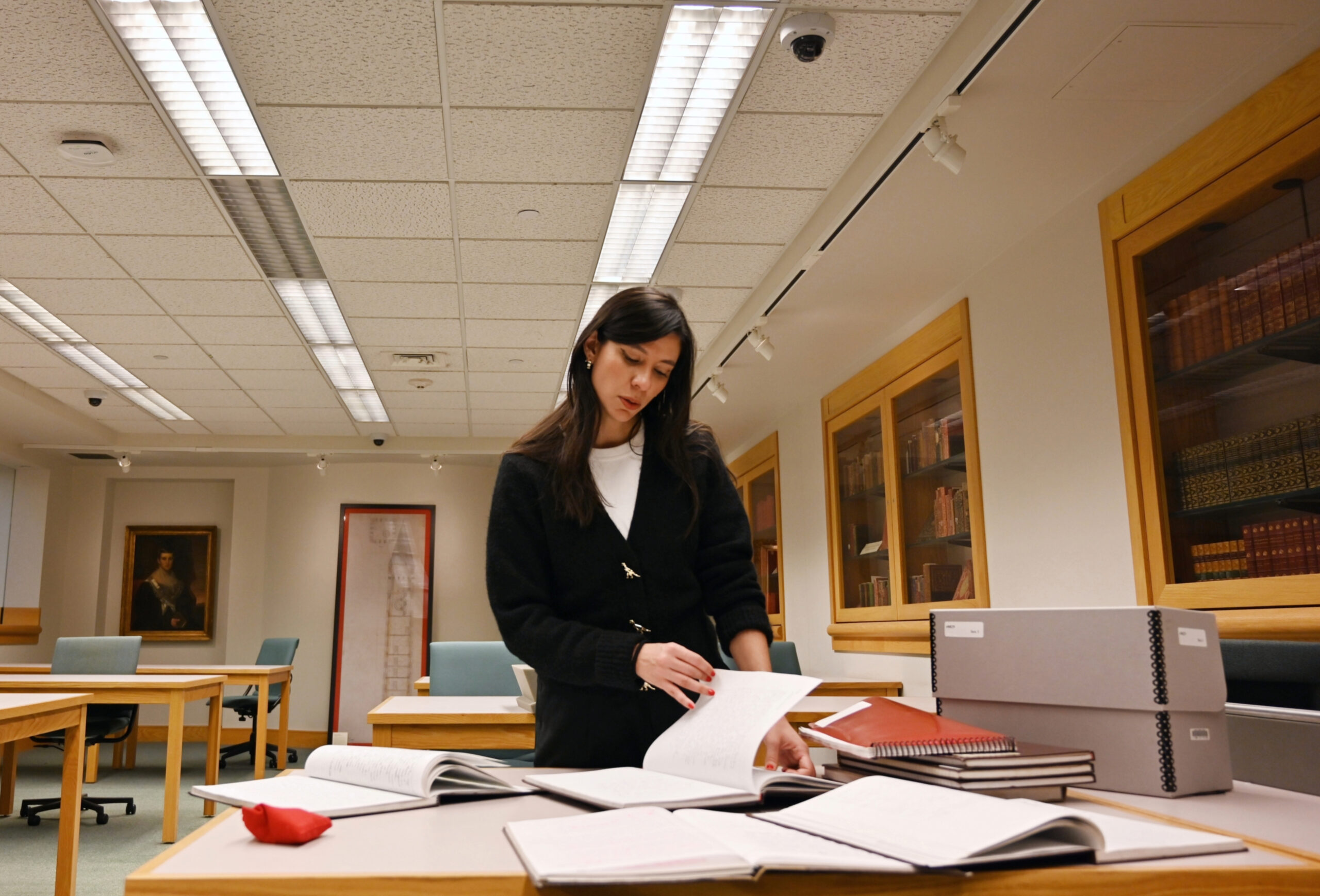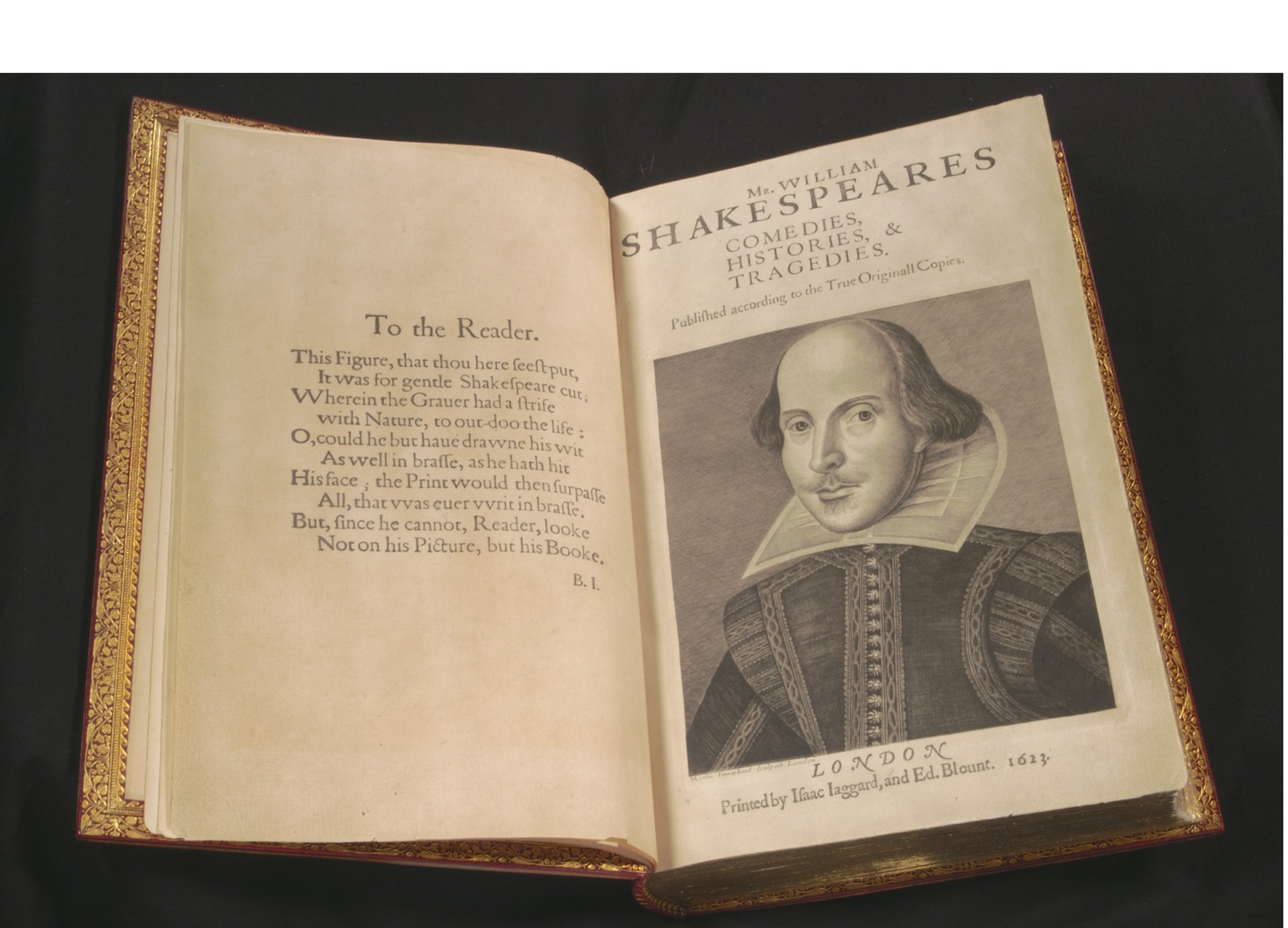
A world without Macbeth, Twelfth Night, The Tempest or Julius Caesar? Half of William Shakespeare’s dramatic works – including these four – would have been lost forever if it weren’t for the posthumous publication of his collected plays in 1623, in which 18 appeared in print for the first time.
To celebrate the 400th anniversary of this fateful collection of plays known as the First Folio, Cornell University Library is displaying its copy at a special one-day event, “Shakespeare’s First Folio at 400: A ‘Pop-Up’ Showcase,” on April 21 from 1 to 5 p.m. in the lecture room on level 2B of Carl A. Kroch Library.
“The 400th anniversary of the publication of Shakespeare’s collected plays offers us a welcome opportunity to bring this special 1623 volume out of the rare book vault,” said Katherine Reagan, the library’s Ernest L. Stern ’56 Curator of Rare Books and Manuscripts.
“Students and scholars are still learning about the editing and printing of Shakespeare’s plays by studying these volumes, hundreds of years after they were first produced,” she said. “We wanted the Cornell community to have the chance to see and learn from the library’s rare Shakespeare volumes up close.”
The one-day showcase also features three later editions of the Shakespeare’s folios, all published in the 1600s, along with related artifacts in the library’s Division of Rare and Manuscript Collections. These include a miniature model of the Globe Theatre made in 1935 by John Cranford Adam, a professor of English literature at Cornell.
“Despite some inaccuracies, it was the first systematic attempt to re-create in detail the building in which Shakespeare’s plays were produced,” said Laurent Ferri, Curator of pre-1800 Collections.
“When you see it, you’ll understand that Shakespeare was, and remains, ‘the people’s playwright,’” said Ferri, referring to the layout of the theater, where viewers who couldn’t afford a seat on elevated levels nonetheless had the closest view of the stage. “Shakespeare wrote, staged and performed his plays for the so-called ‘groundlings,’ not just for an elite of connoisseurs or scholars.”
Other featured books include an edition of King Lear, printed in 1904 in East Aurora, New York, by Roycroft, a community that was part of the Arts and Crafts movement in the United States.
“One of the highest achievements of the Roycrofters is the 12 copies of Shakespeare’s sonnets printed on vellum and all illuminated with different designs,” Ferri said. “King Lear was printed on handmade paper and bound with locally tanned suede leather, supposedly for middle-class American readers.”
The history of the publication of Shakespeare’s plays is also the story of communities publishing, reading and performing the works of the Bard, Ferri said.
“The same ‘canonical’ text has appeared and will continue to appear in many different incarnations across time and space,” he said. “Each of them has its own purpose, its own flavor, its own approach.”
This story also appeared in the Cornell Chronicle.
